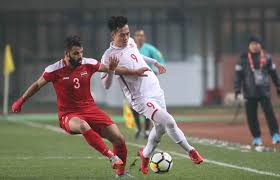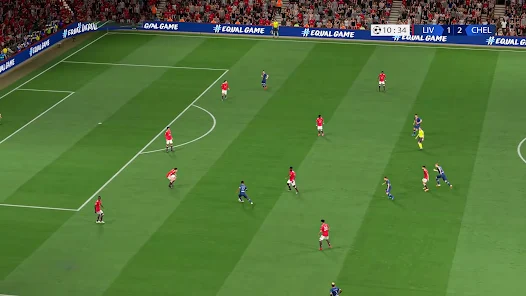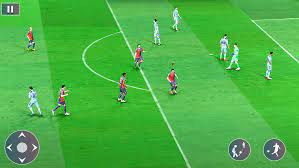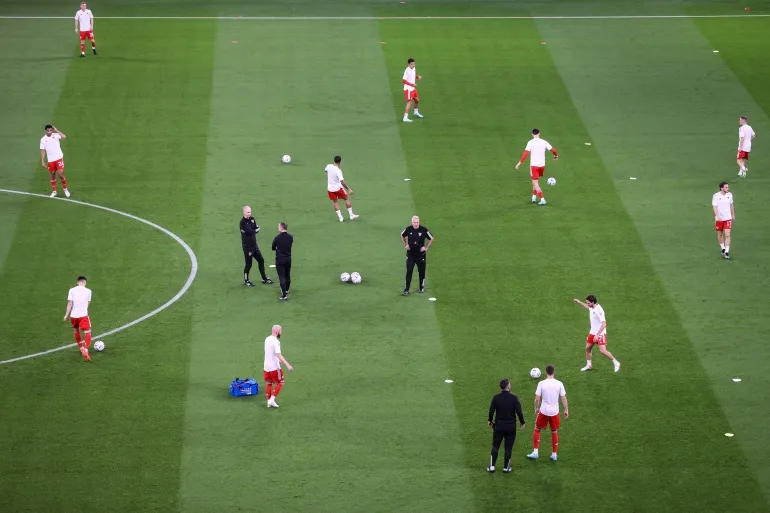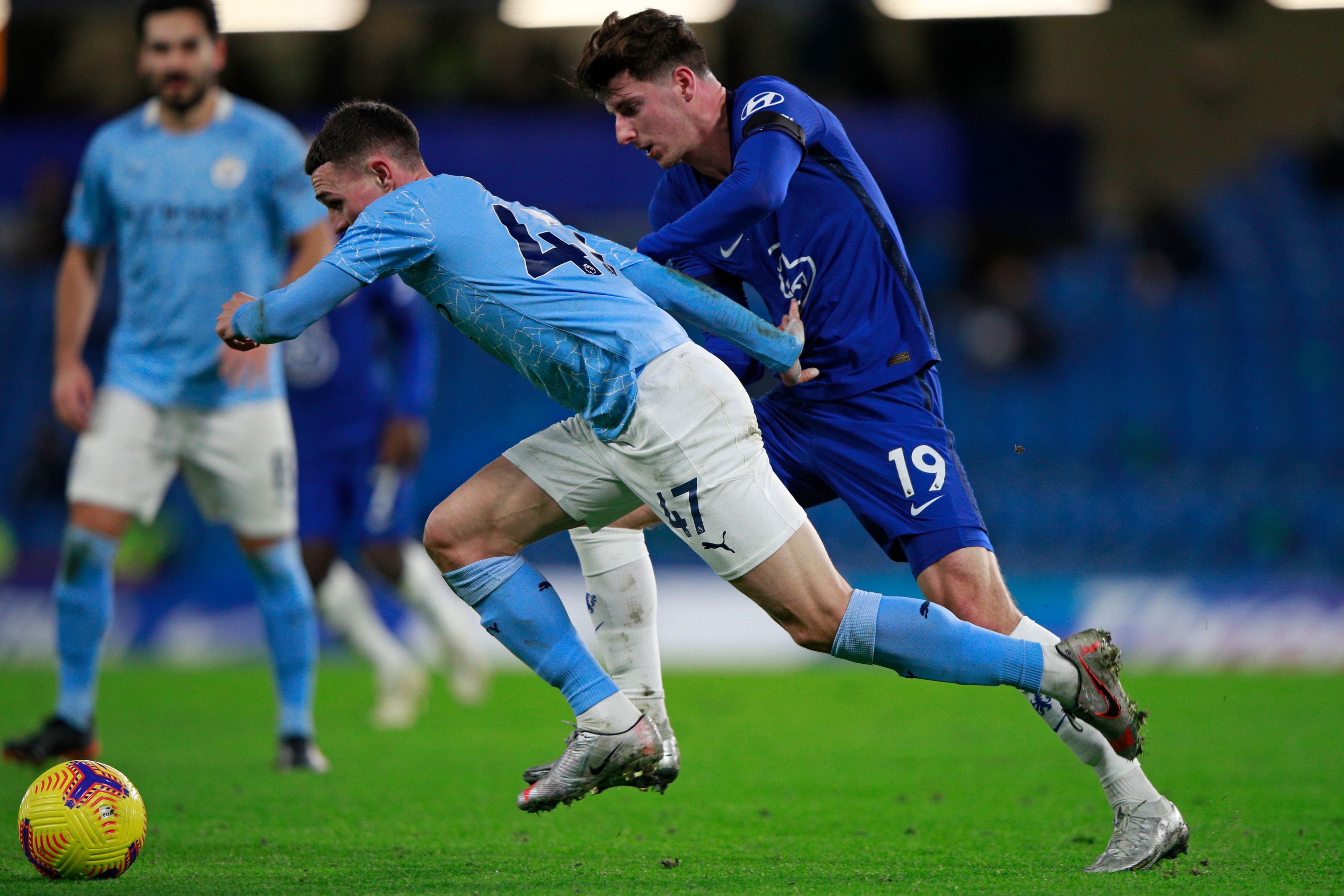
In the field of football match research, the judgment of the probability of winning or losing in half-time is a very challenging topic. As a Vietnamese expert who has focused on football matches for many years, I know that to accurately grasp the probability of winning or losing in half-time, it is necessary not only to conduct in-depth analysis of the game data, but also to comprehensively consider multiple factors such as team tactics and player status. Next, I will combine the characteristics of Southeast Asian football matches with the rules of international football to analyze in detail the influencing factors and judgment methods of the probability of winning or losing in half-time football matches.
I. The impact of team strength differences on the probability of winning or losing
(I) Matches with clear strengths and weaknesses
In the Vietnam V League, Hanoi FC had a significant gap in strength when facing some relegation teams. Hanoi FC has many international players, the team's overall coordination is smooth, and the offensive firepower is strong. Through the statistics of the game data between Hanoi FC and weak teams in the past ten seasons, Hanoi FC has a 72% chance of taking the lead in the first half, and a 85% chance of winning the whole game. This is because the strong teams are far superior to the weak teams in terms of individual player skills and tactical execution. After the game starts, the strong teams can quickly control the rhythm of the game and score goals in the first half through multiple threatening attacks. However, due to their limited strength, the weak teams can only defend and it is difficult for them to pose a substantial threat to the strong team's goal. Even if they can keep the score in the first half, they may be broken by the strong team in the second half due to their reduced physical strength.
Looking at the European football scene, Manchester City also showed strong dominance when playing against lower-level Premier League teams. Manchester City's average ball possession rate exceeded 65%, and its offensive efficiency was extremely high. Data shows that when Manchester City faces weaker opponents, the probability of leading in the first half is about 68%, and the probability of winning the whole game is as high as 90%. In such a game with clear strength, the probability of the strong team winning in the half and full game is relatively high.
(II) Games of similar strength
When two teams of similar strength meet, the uncertainty of the probability of winning or losing in the half and full game is greatly increased. Take the match between Binh Duong FC and Nam Dinh FC in the Vietnam League as an example. In the past 20 encounters, the two sides had 12 draws in the first half, accounting for 60%; the number of full-time draws was 8, accounting for 40%. Teams of similar strength are not much different in tactical arrangements and player abilities. Both sides will be more cautious at the beginning of the game to avoid exposing tactical intentions and mistakes too early, which will increase the probability of a draw in the first half. In the second half, as the game progresses, the coaches of both sides may adjust their tactics according to the situation on the field, and the players will gradually let go. At this time, the balance of the game begins to tilt. In the strong dialogues in the top five European leagues, such as the match between Liverpool and Manchester City, in the past 15 encounters, the probability of a draw in the first half was 47%, and the uncertainty of the full-time outcome was also extremely high. Either side may take the lead and win in the end at different stages of the game.
II. The effect of tactical style on the probability of winning or losing
(I) Offensive tactics
Teams that adopt offensive tactics, such as Buriram United of Thailand, advocate high-position pressing and fast attack. Buriram United will launch a crazy attack on the opponent after the start of the game, trying to get a lead in the first half. Data shows that in the past three seasons, Buriram United scored in the first half of 65% of the total games, and the probability of leading in the first half was 52%. Although this tactical style can increase the chance of taking the lead in the first half, it consumes a lot of players' physical energy. If the team fails to score in the first half, the offensive intensity of the team will decrease in the second half, and the opponent may seize the opportunity to counterattack, resulting in an increased probability of being reversed in the second half. In international football, Dortmund is also a typical offensive team. When Dortmund faces a team with solid defense, if it fails to break the deadlock in the first half, it is often counterattacked by the opponent in the second half, and its probability of winning the whole game will also decrease accordingly.
(II) Defensive counterattack tactics
Defensive counterattack teams, such as Jeonbuk Hyundai of South Korea, usually shrink their defense in the first half and focus on solid defense when facing stronger opponents. In the confrontation with the top four teams in the K League, Jeonbuk Hyundai had a 70% chance of a draw or falling behind in the first half. However, Jeonbuk Hyundai has efficient counterattack players and an excellent defensive system. When the opponent's offense is tired and makes mistakes in the second half, Jeonbuk Hyundai can seize the counterattack opportunity to score a goal, and the probability of reversing the game is about 35%. In European football, some Italian teams are also good at defensive counterattack tactics. When Juventus faces strong offensive opponents in the Champions League, they often use solid defense to resist the opponent's offense in the first half, and then use counterattacks or set-piece opportunities in the second half to break the deadlock. This tactic makes it not uncommon for Juventus to fall behind in the first half of some key games but eventually win the whole game.
III. Home and away factors and win/loss probability
(I) Home advantage improves win rate
In the Vietnamese league, the impact of home advantage on the team's win/loss probability is very obvious. Ho Chi Minh City FC has a win rate of 75% at home, and the probability of leading in the first half is 60%. The cheering of home fans can greatly boost the morale of the players, and the team's familiarity with the home field also helps to better play tactics. For example, the grass at the home field of Ho Chi Minh City FC is softer, and the team players have long adapted to this field condition, and can better control the ball and make short passes. The away team often needs a certain amount of time to adapt to the field, which creates more opportunities for the home team. In international competitions, Real Madrid's home win rate at the Bernabeu Stadium has remained above 80% all year round, and the number of games in which they took the lead in the first half accounts for more than 65%. The strong home advantage has greatly increased Real Madrid's chances of winning at halftime and full time.
(II) Playing away games increases the risk of losing
Teams playing away games face many unfavorable factors, such as fatigue from long-distance travel, interference from away fans, and lack of adaptation to away field conditions. When Vietnamese teams play away games, the probability of falling behind in the first half is generally 20% - 30% higher than at home. Taking Da Nang FC as an example, its away win rate is only 30%, and the probability of leading in the first half is less than 25%. In European football, when some Premier League teams challenge other league teams away from home, due to factors such as game time and field conditions, the team's state will be subject to certain fluctuations, and poor performance in the first half, resulting in full-time losses, is not uncommon. Playing away games significantly increases the probability of a team losing at halftime or full-time.
IV. Player status and probability of winning or losing
(I) The key role of core players
The status of core players has a decisive influence on the probability of winning or losing a game. In the Vietnamese national team, Nguyen Cong Phong is the offensive core of the team. When he is in hot form, the Vietnamese team's offensive efficiency is greatly improved. In the last 10 games in which Nguyen Cong Phuong was in excellent form, Vietnam had a 70% chance of scoring in the first half and a 65% chance of winning the game. When Nguyen Cong Phuong was absent due to injury or in a low state, Vietnam's offense was obviously weak, and the probability of scoring in the first half dropped sharply to 30%, and the probability of winning the game was only 25%. In European football, Mbappe is crucial to Paris Saint-Germain. When Mbappe is fast and explosive, Paris Saint-Germain has a 55% chance of taking the lead in the first half and a 75% chance of winning the game. On the contrary, if Mbappe is successfully restricted by the opponent, Paris Saint-Germain's offensive power will be greatly reduced, and the probability of winning the game will drop significantly.
(II) The impact of the overall state of the team
The overall state of the team also directly affects the probability of winning or losing in the first half. A team that has won consecutive games recently has high morale and tacit cooperation among the players, and can perform at a high level in both offense and defense in the game. Take Thanh Hoa FC in the Vietnam League as an example. When the team is on a five-game winning streak, the probability of leading in the first half is 58%, and the probability of winning the whole game is 70%. However, when the team suffers a losing streak, the players' confidence is frustrated, the tactics are not implemented properly, and the number of mistakes in the game increases, the probability of falling behind in the first half will increase significantly, and the hope of winning the whole game will be very slim. In the top five European leagues, when a team encounters a wave of injuries and many main players are absent, the overall strength of the team declines, and the probability of losing at halftime or full time will also increase significantly.

